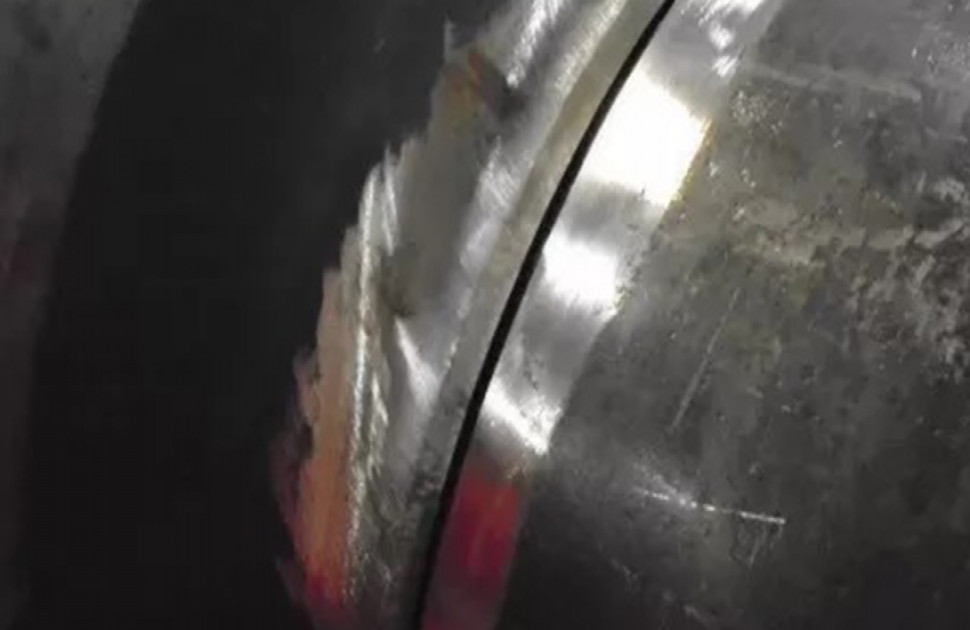Comprehending the Importance of Welding Evaluation in Ensuring Structural Stability and Safety Throughout Numerous Industries
Welding evaluation is an indispensable process that safeguards structural stability and safety throughout varied markets. As we discover the intricacies of welding examination, the inquiry develops: what are the most important variables that add to efficient assessment procedures?
Function of Welding Evaluation
While the stability of welded frameworks is paramount to safety and performance, the function of welding assessment can not be overemphasized. Welding inspection acts as a critical quality assurance procedure that ensures the adherence to established requirements and specifications throughout the welding procedure. By systematically examining welds for problems, disparities, and non-compliance, assessors play an essential role in protecting the honesty of frameworks throughout different markets.
Welding evaluations include a range of activities, from pre-weld assessments to post-weld evaluations. These analyses not only determine possible problems prior to they intensify yet additionally enhance the general integrity and life expectancy of bonded elements. Welding Inspection Milwaukee. Assessments help to confirm the skill and expertises of welders, guaranteeing that welding treatments are executed appropriately and materials work
Furthermore, a rigorous evaluation protocol fosters compliance with regulative requirements and market requirements, minimizing the danger of tragic failures. By advertising a society of safety and accountability, welding examination contributes considerably to both operational and financial performances. Altogether, the function of welding examination is vital, as it underpins the quality, security, and durability of bonded frameworks vital to contemporary facilities and sector.
Types of Welding Examinations
Understanding the numerous types of welding examinations is crucial for keeping the top quality and safety of welded structures. Welding evaluations can be categorized right into numerous kinds, each serving a specific objective in the evaluation procedure.
Aesthetic inspection is one of the most essential type, including a cautious assessment of the welds with the nude eye or through zoom. This approach helps identify surface problems such as cracks, insufficient fusion, or excessive spatter.
These techniques enable examiners to examine the stability of welds without endangering the product's structure. Ultrasonic testing uses high-frequency audio waves to find inner defects, while radiographic screening employs X-rays or gamma rays to visualize internal weld qualities.
Damaging testing, though less typical, involves physically examining examples to recognize the weld's mechanical homes. Each kind of assessment contributes to a detailed analysis, guaranteeing that welding satisfies sector standards and safety requirements.
Industry Criteria and Rules
Establishing sector standards and guidelines is crucial for making certain the security and integrity of welded structures. These requirements act as criteria for quality, efficiency, and safety and security, assisting manufacturers and examiners in the implementation of welding processes. Numerous organizations, such as the American Welding Society (AWS) and the International Company for Standardization (ISO), have actually created extensive standards that determine procedures for welding practices, qualification of welders, and assessment techniques.
Compliance with these guidelines not just improves the top quality of welds but additionally reduces risks linked with architectural failures. Particular codes, such special info as the ASME Boiler and Pressure Vessel Code, synopsis needs for the building and construction of stress vessels, ensuring they can withstand functional stress and anxieties. Additionally, neighborhood and nationwide guidelines usually mandate adherence to these market requirements, strengthening their relevance across markets like building and construction, aerospace, and automotive production.
Regular updates to these requirements mirror advancements in innovation and welding methods, making sure that safety and security actions continue to be appropriate. Thus, a complete understanding and implementation of these standards is crucial for welding professionals, cultivating a culture of security and quality in welded frameworks.
Consequences of Poor Inspections
Inadequate assessments can lead to extreme repercussions in the welding sector, weakening the really standards and pop over here policies made to ensure safety and architectural stability. The effects of bad evaluations can manifest in various kinds, from immediate safety threats to long-term architectural failures.
Moreover, insufficient assessments can tarnish a firm's reputation and result in legal effects, including penalties and litigation. Inevitably, the implications of poor examinations prolong beyond specific tasks, influencing industry-wide criteria and public understanding, thus emphasizing the vital demand for effective and rigorous welding examinations.
Ideal Practices for Effective Examinations
Effective welding evaluations are paramount to guaranteeing the honesty and safety and security of bonded structures. To achieve ideal outcomes, inspectors must stick to several finest methods that improve the evaluation procedure.

Second of all, examiners must possess the needed credentials and certifications pertinent to the welding processes and materials being taken a look at. Continuous training and specialist growth are critical to staying updated on market requirements and technical advancements.
Furthermore, using proper examination tools and strategies, such as aesthetic assessments, ultrasonic screening, and radiographic evaluations, is vital for finding problems that might jeopardize architectural stability.
Lastly, extensive documentation of the evaluation process is important. By implementing these ideal practices, organizations Going Here can significantly boost the performance of their welding examinations and make sure safe, reputable procedures.
Verdict

In final thought, welding examination is essential for keeping architectural stability and security throughout numerous markets. Prioritizing reliable welding assessments is essential to make sure the safety of personnel, properties, and overall functional stability.

As we explore the ins and outs of welding examination, the inquiry arises: what are the most critical elements that contribute to efficient assessment processes?
Welding assessment offers as a crucial top quality control procedure that ensures the adherence to developed standards and specs throughout the welding operation. In amount, the duty of welding inspection is indispensable, as it underpins the top quality, safety and security, and durability of welded frameworks crucial to contemporary framework and market.
Various organizations, such as the American Welding Society (AWS) and the International Organization for Standardization (ISO), have actually established detailed standards that dictate procedures for welding practices, certification of welders, and assessment techniques.
Inevitably, the implications of inadequate examinations prolong beyond private tasks, affecting industry-wide standards and public assumption, hence highlighting the important need for strenuous and reliable welding examinations.